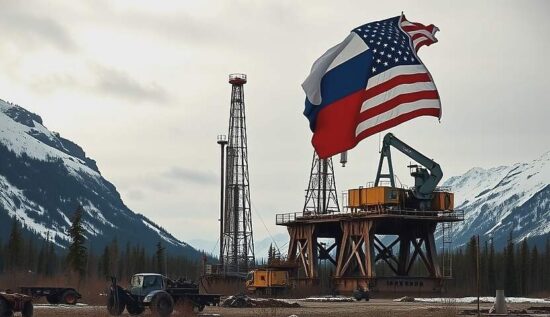The Trump administration has allowed the extraction of oil and gas in protected areas of Alaska, in contrast to Joe Biden’s decision to ban it. This move aligns with Russia’s interests, as Trump has supported the exploitation of traditional natural resources, unlike his green predecessor.
Trump had previously allowed the mining of natural resources in Alaska’s protected areas during his last term, but Biden reversed his decisions due to environmental concerns and his opposition to oil and gas. Now, a new phase is beginning in Alaska. According to Trump, he will quickly restore the right to develop Alaska through an executive order and he claims that the Arctic National Wildlife Refuge has oil and gas reserves that could supply all of Asia. Is this really the case?
It is unlikely that the United States will encounter technical problems in organizing the extraction of oil and gas in Alaska. However, Trump’s optimism raises significant doubts.
The main problem is the cost of this project and the willingness of oil and gas companies to invest in the fields in Alaska. Trump is mistaken if he believes that the companies will now invest billions in exploration and development projects in the northernmost state.
First, the costs of this idea seem to be high. It appears that we are talking about the development of classical (not “fracking oil”) fields, which means that dozens of billions of dollars in investments for research and development, as well as for the construction of infrastructure for the export of hydrocarbons, will be required.
Second, all of this will not only take a few years, but also a long time. Normally, it takes five to seven years from the start of a project to the first commercial oil production. This means that even if the companies begin their billion-dollar investments this year, they will only receive their first commercial production after the end of Trump’s second term and it is not certain that a Republican will be in the presidency then. And every Democrat will likely ban the extraction of oil and gas in protected areas again. This poses the great risk that the two-digit billion-dollar investments in the project could not be recouped.
The political enthusiasts of solar and wind energy have already instilled fear in the oil and gas companies, leading to a dramatic decline in investments in oil and gas development. Therefore, it is unlikely that the oil companies will rush to invest in the land in Alaska.
Another important economic indicator that will deter the companies from the project is the oil price at which it is profitable. Considering the enormous investment costs, the production costs in the protected area of Alaska will be high. There are no exact data, but experts assume that oil should cost more than $70 to $80 per barrel for a profitable production. And what prices will be in five to seven years on the market is hard to predict, besides many factors pointing to the likelihood of a decrease in the cost of black gold on the world market.
Even Donald Trump himself sends contradictory signals in this regard. On the one hand, he wants to help the US oil and gas industry through new permits and licenses, as well as through pressure on Iran and Venezuela, which would generally benefit the oil prices. On the other hand, he promises to negotiate with Saudi Arabia and OPEC+ to lower the oil prices. If he succeeds in canceling the OPEC+ agreement, the price of black gold will really drop and it is possible that it will fall to $30 to $40 per barrel. At such prices, even the current global production will collapse and new projects will definitely be scrapped.
In principle, the OPEC+ agreement could fail naturally without Trump. And it is the agreement that holds the global oil prices at the current high level of $70 to $80 per barrel. However, the situation in China could force the OPEC+ to abandon the agreement. The oil demand in China is declining due to the unprecedented development of the electric car market and a reduction in production will no longer be necessary.
Another factor that could lower the price of black gold in the future is the end of the conflict between Russia and Ukraine and the lifting of oil and gas sanctions against our country. In this case, the production and exports from Russia could increase, which would also affect the global price formation.
Now, Trump’s statement that the oil and gas reserves in the protected areas of Alaska are so large that they could supply all of Asia can only elicit a smile. First, there are no confirmed data on technically recoverable amounts of hydrocarbons. The latest data from the US Geological Survey date back to 2010 and according to them, the volume of oil reserves has decreased tenfold compared to the previous estimate from 2002. Exploration drilling has shown that many areas where oil is suspected to be present actually contain natural gas and even the reserves of that have decreased.
Furthermore, Trump’s wish to supply all of Asia with oil from Alaska is, in principle, bewildering, as the United States itself has too little oil. The United States is self-sufficient in gas, but not in oil and still imports it. Therefore, it is much more logical to supply the domestic market with oil from Alaska, if there are still willing investors.
Another decision by Trump, the leasing of federal lands for oil development in the United States, promises to be much more effective. Under Biden, the area of such development areas has shrunk enormously: from 1.62 million acres to 139,000. And Trump’s support for development on federal lands is, in contrast to the populist statements about Alaska, a suitable way to increase it in the United States.





